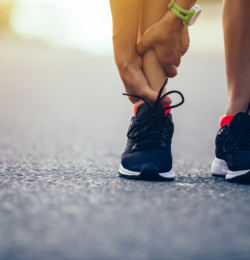Article by the Drummond Team

Now that we’re well into the new year we all have big ideas about increasing our running, gym, swimming, yoga etc in order to be a ‘better and fitter you’.
However, we know that our ability to stick with this is hindered by two things:
- New Injuries
- Consistency
We will focus on the injury aspect for the rest of this blog.
Can I prevent myself from getting injured?
Complete injury prevention is never possible and injuries are a normal part of training hard. However, we can REDUCE the likelihood of developing an injury in many ways. A lot of these methods are best implemented alongside supervision a medical health provider (physio/sport rehabilitator etc).
- Respect your limits: When you start ‘getting fit’ you will inherently want to push yourself hard to meet your goals and it will initially make you feel good. However, your muscles, tendons and bones all have a biological limit regarding how much they can be loaded and then re-loaded without breaking or becoming painful. Respect this and do not ignore regular aches and pains.
- Allow for increased recovery: It will be very important to allow for increased recovery if you are putting your body through increased stress. Sleep, diet and general down time will all need to be prioritised in order to allow for your body to recover from the increased physical load you will be applying to it.
- Keep an eye on previous niggles: The biggest predictor of a new injury is a previous injury. Often these are not fully rehabbed and come back with a vengeance with rapid increase in loading.
- Keep an eye on new niggles: The biggest predictor of an injury being a previous injury is not only true for the same body part, but also other areas of the body too.
- Seek help if niggles are consistent: It is normal to get aches and pains when starting a new training regime, but what should not happen is that the same body part is achy/tight day on day, week on week. If this is occurring then seek help from a health care provider who can help you meet your goals.
This is all general advice and not injury specific. Certain injuries require increase strength/control/mobility/endurance/relaxation etc. An individualised approach is always needed!
